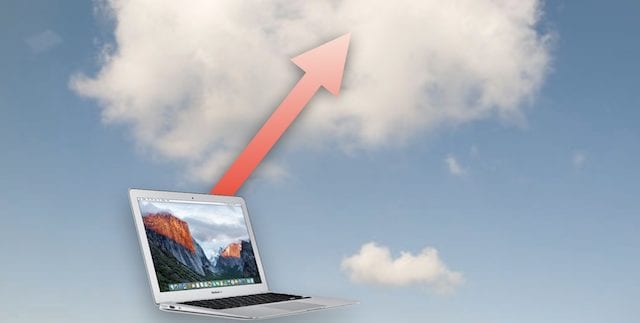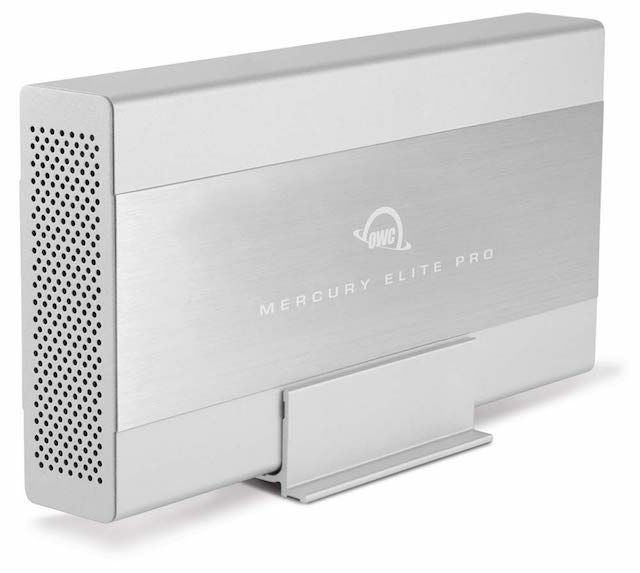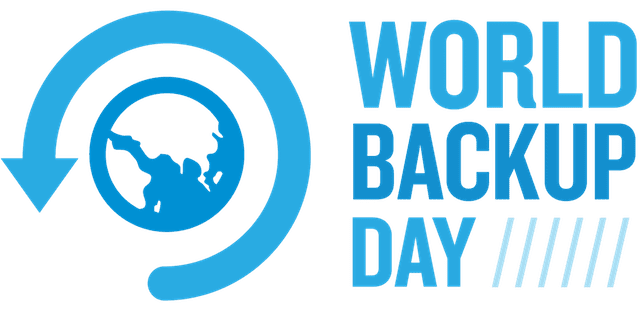March 31 may have been World Backup Day, but here at The Rocket Yard we put a lot of emphasis on the importance of backups throughout the month of April. Today we’re going to take a look at online backup services, which can be a valuable piece of the backup puzzle.
Now, why would you want to store a copy of all of your data offsite when you have a big drive or RAID array backing it all up in your home or office? Physical security is the answer. What if a fire or other disaster destroyed your computer and the backup drive? Wouldn’t it be comforting to know that your data still resides somewhere and can be recovered?
Online backup services consist of two pieces: software that runs on your Mac and a data center (or multiple locations) where your data is stored. In most cases, the software encrypts your data before sending it off to the data center. That’s important, as you don’t want anyone to be able to have a look at your personal or business data while it’s in transit to the data center or while it’s stored in some massive data warehouse.
The software usually takes a while to upload an initial copy of your Mac’s data to the data center, as you don’t want it to overwhelm your limited internet bandwidth. With a lot of data on your Mac, that can take a long time — sometimes weeks or even months. Some services provide a way to “pre-load” your data by sending them a drive with a recent backup on it. They are able to connect that drive to a local machine, then send the data into their storage system at a much faster rate than over the ‘net. Once a full backup is stored online, the software keeps an eye on changes that are made on the Mac and then sends the changes to the online copy.
What happens if you need a quick restore of your data after a disaster? It depends on what data and how fast you need it. For example, most of the services allow you to “pick and choose” the data that’s most critical for you so that it can be downloaded to your replacement computer immediately, then “trickle down” the remainder of the backup as needed. If you really need all of your data as soon as possible, most online backup services provide overnight shipping of a disk drive with everything on it. You restore your data, and then in most cases the drive is yours to keep as a new backup drive. Needless to say, you get to pay for a drive of adequate capacity as well as overnight shipping.
Having an online backup is just one more piece of a complete backup plan. Now let’s take a look at some of the better-known online personal backup services, neatly lined up in alphabetical order:
Acronis True Image Cloud: Acronis True Image Cloud offers not only a cloud backup of everything on your Mac (including the operating system and all settings), but if you have a disk drive attached it will also image that data locally. One app to do it all, and the company charges $69.99 annually for one Mac (World Backup Day special pricing, usually $99.99 per year) and three mobile devices. A free trial is available.
 Back blaze: If you want a “set it and forget it” online backup solution, you probably can’t do better than to use Backblaze. I’ve used this service for years and like how most of the time I don’t even know that my big iMac is being backed up… but with a quick click in the menu bar I can see my backup status. It’s $5 per month (or $50 per year) per computer. Restores of up to 4TB of data are sent via FedEx for $189, and you can return the drive to Backblaze for a refund. Have external drives with data on them? Backblaze backs them up as well. Finally, if your computer is stolen or lost, Backblaze has a built-in location service that can help you figure out where it is.
Back blaze: If you want a “set it and forget it” online backup solution, you probably can’t do better than to use Backblaze. I’ve used this service for years and like how most of the time I don’t even know that my big iMac is being backed up… but with a quick click in the menu bar I can see my backup status. It’s $5 per month (or $50 per year) per computer. Restores of up to 4TB of data are sent via FedEx for $189, and you can return the drive to Backblaze for a refund. Have external drives with data on them? Backblaze backs them up as well. Finally, if your computer is stolen or lost, Backblaze has a built-in location service that can help you figure out where it is.
Carbonite: A well-known name — probably because Han Solo was frozen in carbonite — Carbonite offers unlimited cloud backup storage for $5 a month. For those who have huge single files like videos that they need to have backed up, then Carbonite may not work for you as there’s a 4GB individual file size limit. Any files larger than that must be backed up manually.
Crash plan: Crashplan has an interesting setup; you can use their app for free to back up your device to a local drive or a trusted local computer. When you add cloud backups to that, the price goes up to $5 a month. One item that might be of concern about Crashplan when compared to all of the other online backup services is that it uses a Java-based client…and Java is unfortunately involved in a lot of security-related issues. All of the other services here use native OS X apps that are much more resistant to Java hacks.
 iDrive: Although it sounds like an Apple product, it isn’t. iDrive runs $50 a year, but unlike most of the other services listed here it has some limitations: 1TB of storage in total, and a 10GB individual file size limit. The company’s personal backup plan lets any of your devices back up to an account as long as you don’t exceed that storage limit. The service is currently the least expensive out there — $44.62 for the first year.
iDrive: Although it sounds like an Apple product, it isn’t. iDrive runs $50 a year, but unlike most of the other services listed here it has some limitations: 1TB of storage in total, and a 10GB individual file size limit. The company’s personal backup plan lets any of your devices back up to an account as long as you don’t exceed that storage limit. The service is currently the least expensive out there — $44.62 for the first year.
Cozy: Mozy was about the first service that provided cross-platform (Windows and Mac) backup service, so it was useful in the past for those companies or families that had both PCs and Macs. However, the company’s pricing structure seems to be stuck in the past as well; Mozy offers only 50GB of online storage for $5.99 per month, or 125GB at $9.99 per month. Many Mac users have much more data to back up…
SOS Online Backup: SOS Online Backup prides itself on its speed, which is “52% faster than Carbonite and 78% faster than Mozy”. The company offers unlimited data backups at $79.99 per year, and provides true versioning — think of it as being much like Time Machine, but in the cloud. It keeps every version of a file that you’ve been working on, so that inadvertent mistakes can be “erased” by grabbing the most recent version. The company that runs SOS Online Backup has 11 independent data centers around the world, so there’s a data center nearby wherever you or your company may be. There are no file size limits and perhaps the most honest pricing model I’ve seen, with no add-ons.
Spider Oak ONE: The last online backup service we’re looking at is Spider Oak ONE, which offers 1TB of storage for $12 per month. Spider Oak prides itself on the fact that you “hold the keys” — that is, you alone have the personal encrypt key. However, that’s true of many of the other services here, including Backblaze, Crashplan, and iDrive. Personal encrypt keys are rather important, as it ensures that your data is encrypted before being transferred across the internet and that it’s stored without the company having any knowledge of what is in that blob of encrypted data.
Have a favorite solution for cloud backups that we don’t list here? Let us know about it in the comments.










With CrashPlan exiting the Family (small user) space, an update on alternatives or even an article on creating your own offsite backup system would be helpful. Just a suggestion :-)
Sounds good – you can create your own island of information. And It will be working for years – as this is the main purpose of the cloud services. But, there is some kind of troubles – where don’t help anything, and we don’t give enough warning for this (more details here: http://blog.macsales.com/35738-online-backup-services-cloud-based-insurance-for-your-data). By one word – if cloud was made of SSD-storages, you cant use any classical methods of recovering…cause this technology has possibility for very fast “read/record” – but don’t have the same structure as the HDD with the all minuses of it.
i will never ever pay someone to host my backups online. Bittorrent Sync all the way
Great. But, just where are you syncing off-site to?
A second business location, safely located in another state?
Your vacation home, safely located similarly far away?
Or, to somewhere less safe, in terms of real disaster recovery?
Of course, any sort of off-site backup is better than none at all.
I chose Crashplan b/c they sent me a “seed” drive so that I could transfer files to it locally and send it back to them to upload to their servers. Saved me from having to upload over a tb of data.
However, I wish there was someway I could do that with my over 6tb of movies and music on my external drive. There’s no way I could ever upload that kind of data.
On the face of it, that initial seed-drive setup, and CrashPlan’s support for Linux, are very appealing.
However, CrashPlan’s requirement of having Java JRE installed on all platforms, is too great a security risk — and quite unnecessary, since there are other alternatives. It makes little sense to add a significant, well-recognized attack surface vulnerability to a system and data you’re trying to protect by backing up off-site.
If someone is a non-business user, currently using CrashPlan, and is happy with it, I wouldn’t urge them to migrate to something else. Probably not worth the trouble for personal data of little or no financial value. And, if someone is a business user already dependent on other legacy Java solutions requiring Java JRE, and already using CrashPlan, again, that’s where they’re already at.
But for someone seeking a new off-site backup solution, it makes no sense to recommend CrashPlan at this point.
As for off-site backup storage of very large, private media collections, sneaker net is still probably the best bet. Just store an encrypted hard drive copy off-site somewhere.
Mercury Elite Pro Dual offers 12TB if you JBOD (or span) two 6TB drives together. Single 8TB hard drives are also now available. OWC Mercury Elite Pro Qx2 goes up to 32TB, and is still fairly portable.
The simpler, the better, though. Avoid RAID striping for backups, if possible. Even avoid spanning drives, if you can. Also, remember, a RAID 1 mirror housed in any single enclosure only counts as _one_ backup copy; though hopefully, a somewhat more reliable one.
At minimum, you ought to have at least three independent copies of all data that’s valuable to you: two copies normally on-site, and one copy always off-site (i.e. a minimum of: the live working copy, a local backup copy, and an off-site backup copy).
Stash it in a safe deposit box, or at grandma’s house — or, do drive-swaps with a friend who doesn’t live in your part of town.
Convenience and the amount of change in your data set over time, both determine and limit how often you ought to rotate your off-site back-up. While once a week is nice, try to schedule at least once a month.
You mention that CrashPlan uses a Java client and that’s a security issue. While I wish CrashPlan had a native Mac client, I don’t understand how a local applet, installed from a trusted source, not running in a browser is a security hazard. I understand how running a Java applet in a browser can be hazardous, but installing and running it locally should be safe. Please explain your rationale.
Good point. There is a distinction between free-standing, native applications compiled from Java code, and ones that require having Java JRE installed. CrashPlan still uses legacy Java clients that require Java JRE. Ideally, one would hope that having Java JRE installed on a computer should be safe. Unfortunately, long experience has shown that it’s *not* safe. Java JRE is highly vulnerable, even if it is kept regularly updated within hours of the release of each new security patch. The issue is not the applets one chooses to run. The issue has been the regular, frequent discovery of heinous new zero-day Java JRE vulnerabilities. Java JRE has often and repeatedly been seen to present serious security vulnerabilities, simply because it is installed on a system. The reasons why Java JRE is problematic — design, security model, poor coding practices, etc. — may be debatable; but it’s inherent vulnerability is now generally assumed and taken for granted. Even if you’re not using Java for anything at all, simply having Java JRE installed substantially increases a computer’s attack surface, i.e. its vulnerability to being hacked. Today, it is generally recognized by IT security professionals that Java JRE ought to be uninstalled from all computers that are not actively employing Java to support legacy business requirements. (For new projects, there are more secure and appropriate alternatives than using Java JRE.) Financial workstations that require legacy software using Java JRE, ought to be dedicated, used for no other purposes whatsoever, and regularly updated, monitored, and undergo security audits. Other uses of Java JRE ought to be replaced with alternatives whenever feasible; and otherwise discouraged as much as possible. CrashPlan (and many other service providers, as well) originally invested in Java clients using Java JRE as a cheap cross-platform development solution. Many professional customers have since migrated away from CrashPlan or no longer even consider it, due to its continued reliance on Java JRE. So, this is indeed an important point for many readers to take note of. But, for its non-business users, CrashPlan is probably in many cases still a better off-site backup solution, than not having one at all. Will the situation with Java JRE ever improve? That is unlikely. Java JRE is going the way of Adobe Flash.
We’re big fans of BackBlaze and have installed it on hundreds of clients’ machines. They’re a fantastic company, very transparent and one of the reasons we chose them over all others was that their code was so clean. I cannot tell you how many times we’ve seen Carbonite cook the CPU trying to push data to it’s cloud. Fans blazing and the whole Mac just slows down. We’ve also worked with clients who have lost data and had to go through all kinds of hoops to get it back from Carbonite and all of the various “plans” they have to make the end user “qualify” to pay to have their data shipped them on a drive, rather than to spend weeks downloading it from the cloud.
Long story short, BackBlaze won our hearts and minds as the best catastrophic backup plan anywhere.
Check them out!
Unfortunately, SOS Online Backup appears to have substantially changed their terms since this article was written. I’m not familiar with them, which is why I bothered to look, based upon the author’s positive call-out of their service.
Backblaze is also quite notable for openly publishing and sharing the results of their substantial and continuing hard drive reliability research. We take their findings into account, along with other reports, in our systems planning and purchase decisions. We don’t currently employ a third-party cloud backup solution. However, if I were asked for a referral, I too would suggest seriously considering Backblaze’s service, and comparing them to any other solution one might consider.
BackBlaze won me over with their refreshing transparency too.
Some years back, they wrote about an outage they had where no data was lost, but some people lost access to it for 24 hours or so. There was a such a refreshing openness about it that it really threw me. Unlike Apple never admitting an across the board hardware failure requiring a recall (they call it a “Repair Extension Program”), BackBlaze basically said, “We had a problem, we’ve fixed it, and here are our takeaways so it doesn’t happen again.
That’s pretty rare in our world and it made me trust them even more.
I’ve had some onerous experiences with Carbonite, as some of our clients use them. I think they really don’t write code well at all. The dumb control panel they have crashes certain machines, they won’t allow you to recover data without it, and all we hear are fans blowing when ever they try to push any data to their cloud. One of our clients was a famous radio talk show host who Carbonite sponsored and they disliked the software too and had us remove it from all machines in favor of BackBlaze. Crazy, huh?
Like some who may hear about BackBlaze from this article and the comments contained herein, I learned about BackBlaze 7 years ago when I was researching an online, catastrophic backup plan we could recommend to our clients. Spent a lot of time trying to get CrashPlan to work for me, as many tech colleagues touted it, but I had the same problem. It may have been Java related, but it would just heat up and smoke the CPU no matter where it was backing up, to another machine on the same network or the internet. The interface was clunky and confusing back then and it just didn’t have that set-it-and-forget-it aspect to it. I started reading tech forums and somewhere, I started hearing about people who had great experiences with BackBlaze.
The rest is history. :-)
The BackBlaze blog is a fun place to pick up lots of information, including the recent publishing of hardware reliability statistics.
They’re not perfect, but I genuinely like the company and how they’re approaching all of this. They have been great partners for us and we now have an affiliates link to them on our website. They’ve been wonderful partners for the past 7 years or so.
~~~~~~~~~~
I like using Arq Agent by Haystacks Software to backup everything to Amazon (MacBook Pro and several external HD’s). I have used S3 Glacier for a few years and have recently switched to Amazon Cloud Drive (unlimited data for $60 per year).
Hm. I’d admittedly forgotten about Arq. It is interesting.
$50 for the Arq client software
+ $60/year for your unlimited Amazon Could Drive
= $110 for the first year.
Without an Arq storage subscription plan, Arq *doesn’t* include free software upgrades.
Hopefully, in the future, Arq might support Linux, and Backblaze B2 Cloud Storage.
After a disaster, is Amazon willing and able to ship you a drive containing your Cloud Drive data?
If not, how long is it going to take you to download it all?
Ok, the reason I’d almost forgotten about Arq is that back when I’d previously examined it, Arq wasn’t really worth considering for most use cases we’d consider or recommend.
Arq and its general situation have greatly improved since then.
However, while there are benefits to Arq, there are still tradeoffs compared to, say, Backblaze.
One of the chief advantages of Arq over Backblaze, is that one can use Arq, with one of several different cloud storage providers of your choice, to backup data on external drives that are normally kept unattached or off-line, and also not have to worry about those external/removable drives’ cloud backups expiring and being deleted from the cloud after 30 days, if the backup agent has been active and hasn’t seen them during that time.
That is potentially an issue with Backblaze.
Furthermore, also unlike with the Arq client, Backblaze will automatically delete from the cloud any backup that the Backblaze client hasn’t actively confirmed the mirror of in the previous 6 months. (That could potentially be an issue in a disaster scenario like occurred with Katrina in New Orleans.)
So, Backblaze is intended for off-site cloud backup of live data on active, online drives, with archived files going back no further than 30 days; whereas Arq can enable long-term, off-site archival cloud storage.
A touted benefit of Arq is that it will backup to the cloud any files you like, regardless of kind, type, or size.
However, Backblaze can also be quite easily configured to do the same (with the only exception being that certain default system folders are quite understandably always excluded — although, that is very simple for a technical user to work around, if necessary).
I do like the basic idea of what you’re doing, using Arq with Amazon Cloud Drive.
However, unlike Backblaze, Amazon Cloud Drive service won’t ship a drive containing your data to you, in order to expedite disaster recovery.
Also, using Arq with Amazon Cloud Drive currently does generally cost rather more than using Backblaze.
Currently, for a single computer system, using Arq with Amazon Cloud Drive costs $60 more the first year, and at least $10 more each year thereafter — not including the cost of Arq software upgrades, which explicitly are *not* going to be free in the future, according to Arq’s current pricing page.
Is that a significant cost differential? That depends on the use case, of course.
Also, neither Arq nor Backblaze themselves currently offer a Linux client. Boo.
So, the only advantage for using Arq with Amazon Cloud Drive for off-site backup, over Backblaze, that I can see, is Arq’s handling of external and dismounted drives, and of long-term system outages, in terms of not deleting the data in the cloud if it isn’t confirmed as a current mirror within 30 days (for external drives) or 6 months (for the computer system hosting the client).
It will be interesting to see if Haystacks Software eventually enables using Arq with Backblaze B2 Cloud Storage.
But right now, just using either plain old Backblaze, or Arq with Amazon Cloud Drive, is probably still a better deal.
Am I missing anything significant in terms of Arq’s advantages (and disadvantages) compared to Backblaze?
I am a user of a guidesforbackup.com Guides for Backup software and i love it.